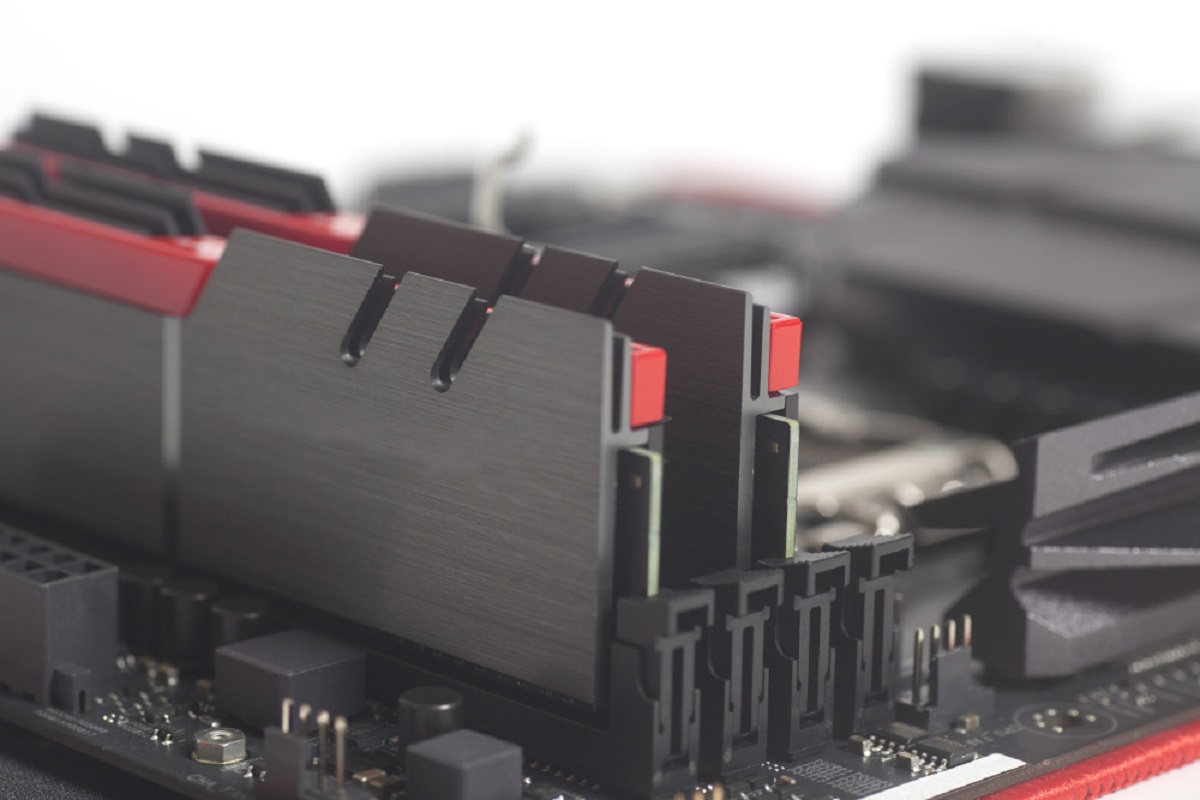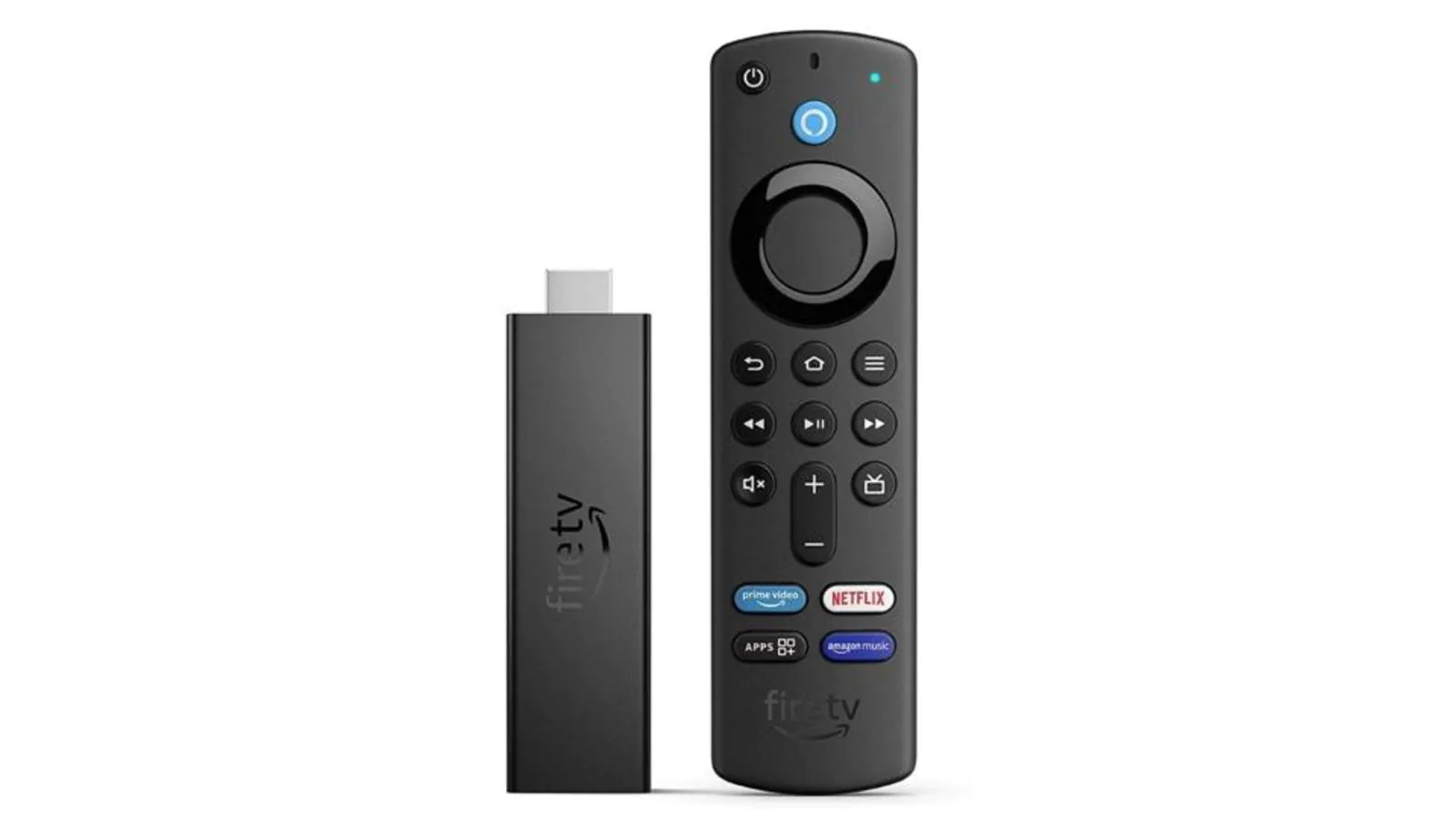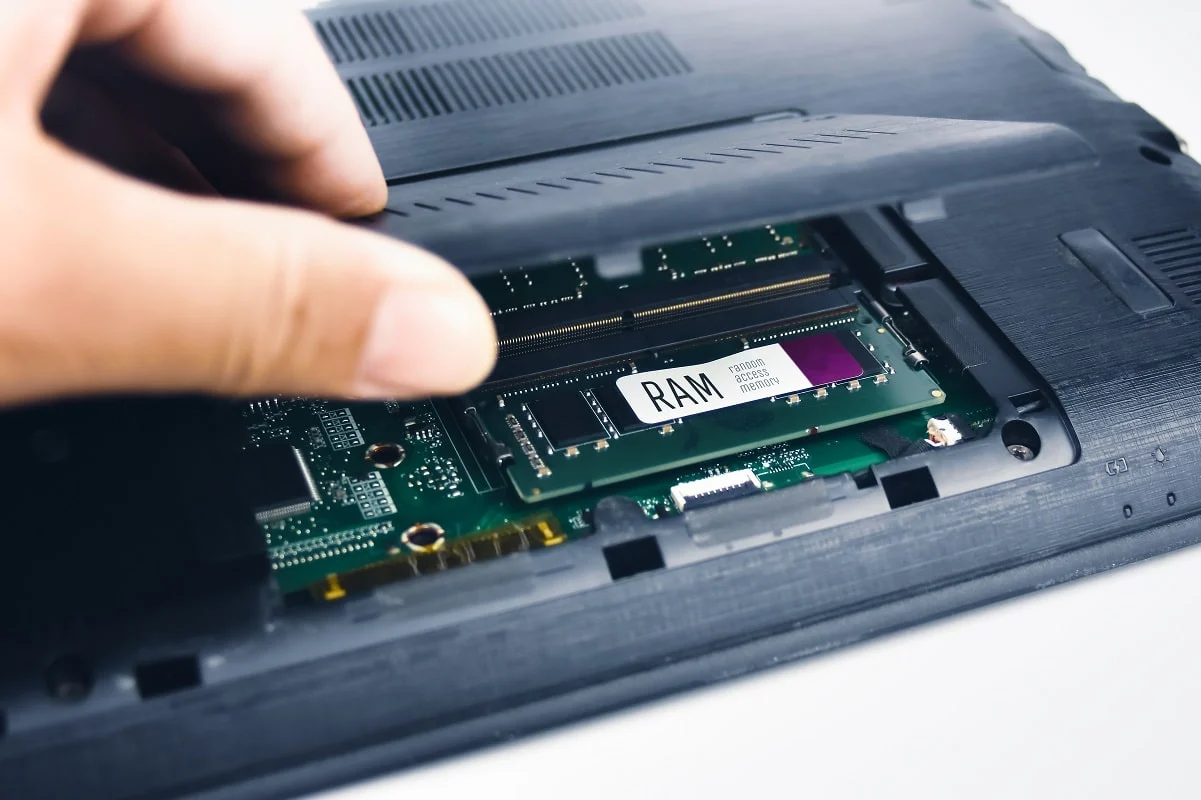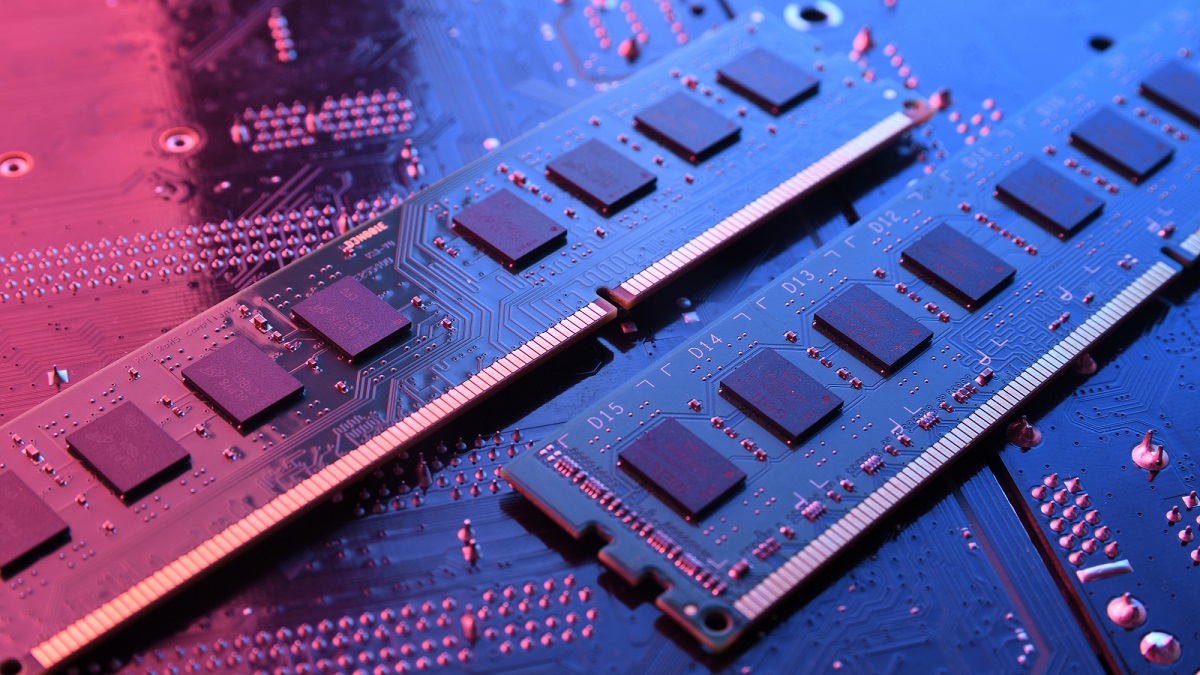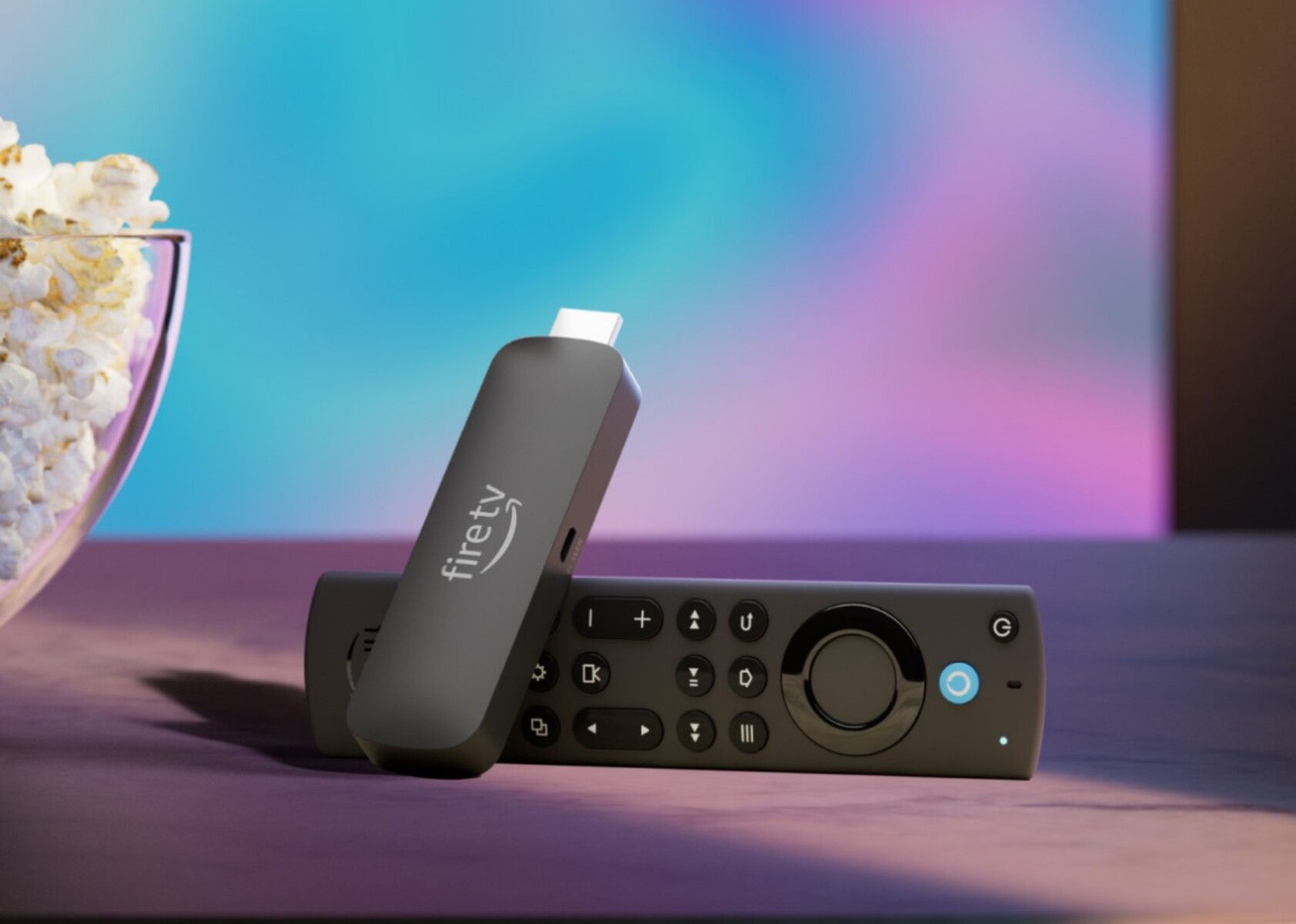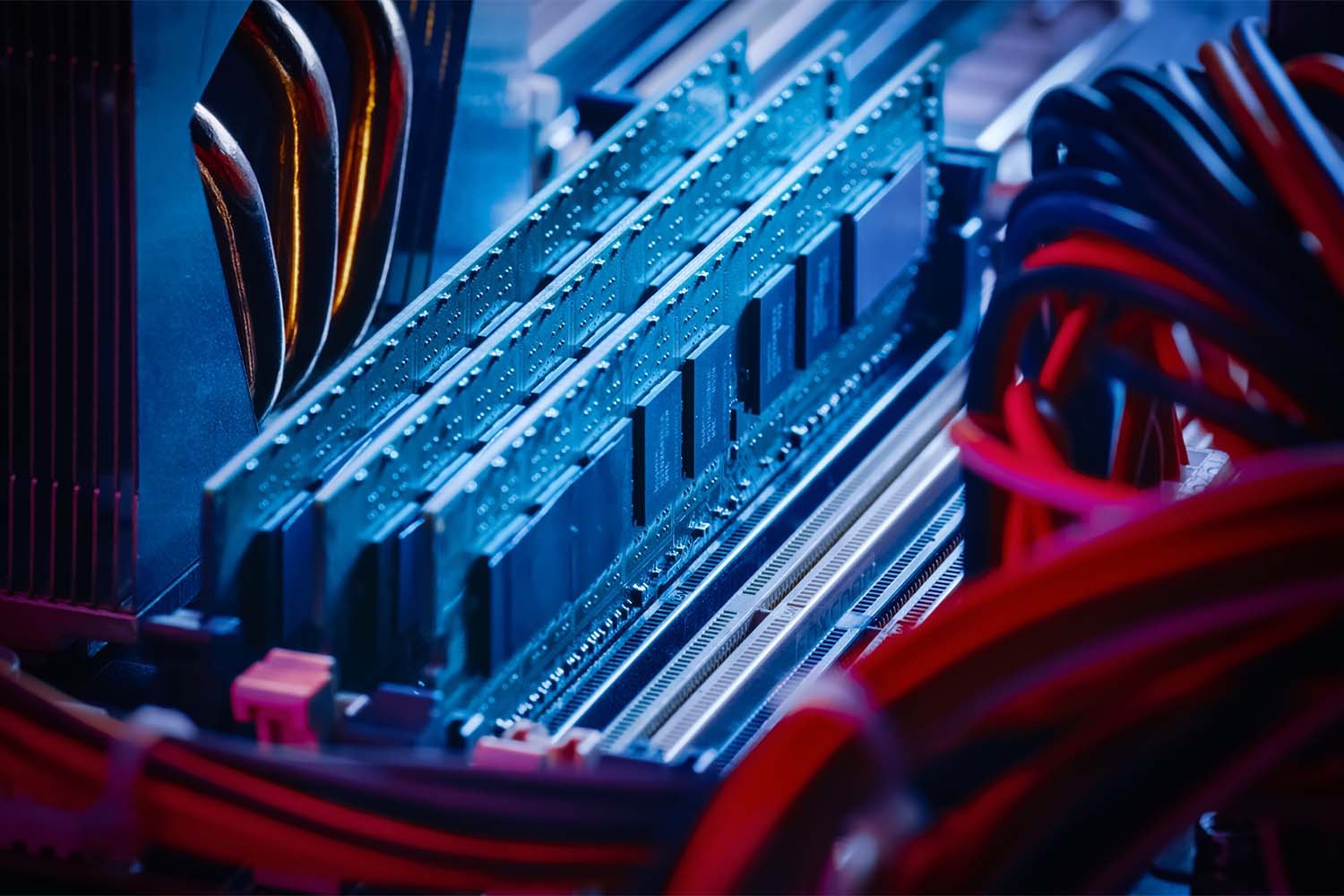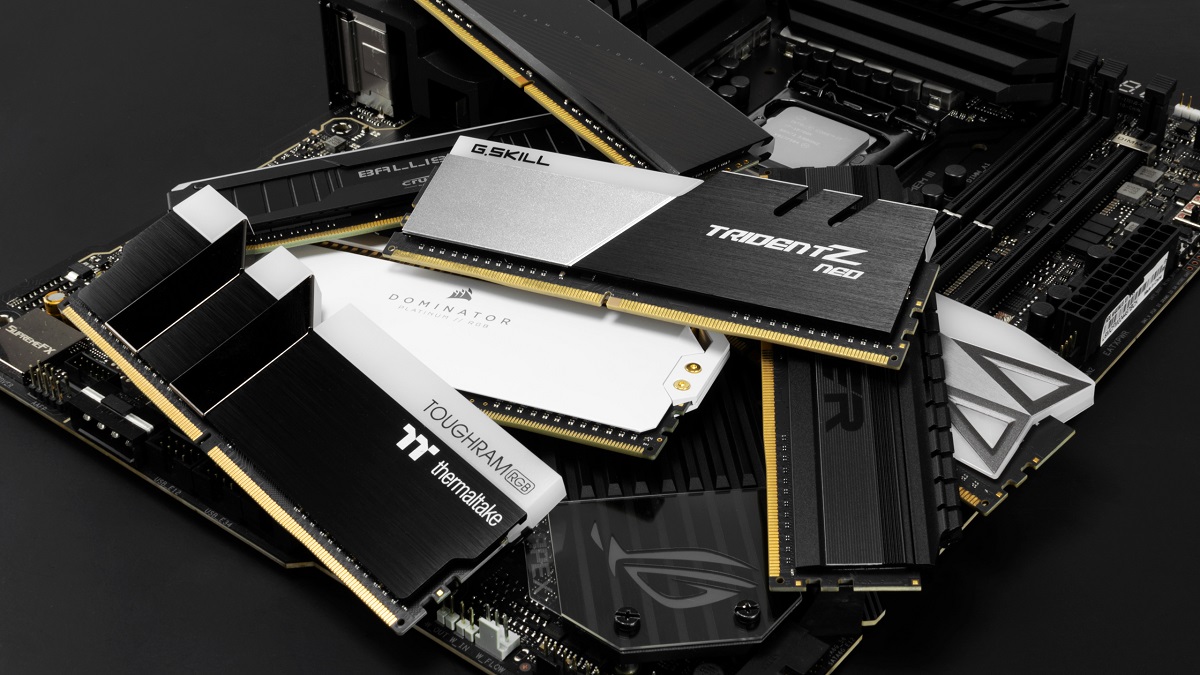Introduction
When it comes to streaming, having the right amount of RAM is crucial for a smooth and uninterrupted experience. RAM, which stands for Random Access Memory, plays a vital role in ensuring your streaming sessions are glitch-free and able to handle the demands of high-quality media.
RAM is a type of computer memory that serves as temporary storage for data that your computer is actively using. When you stream content online, your computer needs to store and process chunks of data, such as audio and video files, in real-time. The amount of RAM you have directly affects how efficiently your computer can handle these tasks.
Insufficient RAM can lead to buffering issues, lag, and even crashes during streaming sessions. On the other hand, having enough RAM can provide a seamless streaming experience with faster load times and smoother playback.
In this article, we will explore the importance of RAM in streaming and discuss the minimum RAM requirements for streaming, as well as recommended RAM for different resolutions. We will also outline the factors you should consider when choosing RAM for streaming and provide guidance on how to upgrade your RAM effectively.
Whether you are a casual streamer or a professional content creator, understanding the role of RAM in streaming is essential for optimizing your viewing and broadcasting experiences. Let’s dive in and explore the world of RAM and its impact on streaming performance.
RAM Basics
To understand the importance of RAM in streaming, it’s essential to grasp the basics of how RAM works in a computer system. RAM is a volatile form of memory that temporarily stores data for quick and easy access by the processor. Unlike permanent storage devices like hard drives or solid-state drives, RAM does not retain data when the computer is turned off.
RAM operates at a much higher speed than other storage devices, allowing for quick data retrieval and processing. It acts as a temporary workspace where the processor can store and manipulate data in real-time. The more RAM your computer has, the more data it can store, which leads to smoother multitasking and better overall performance.
When it comes to streaming, RAM plays a critical role in buffering and playing the media files. When you stream content, data is received in packets and stored in RAM before being processed and played back. Insufficient RAM can result in buffering issues, as the computer struggles to keep up with the incoming data and process it in real-time.
Modern streaming platforms offer high-quality media, including high-resolution videos and immersive audio. These media files require more RAM to process efficiently. If your computer’s RAM is limited, it may not be able to handle the data load, leading to lags, stutters, and interruptions in the streaming experience.
RAM also has an impact on the overall speed of your computer. When you have enough RAM, the operating system and other applications can be loaded into memory, reducing the need for frequent hard drive access. This results in faster launch times and smoother performance, allowing you to multitask with ease while streaming.
It’s important to note that while RAM is crucial for streaming, it’s not the sole determinant of performance. Factors such as the processor, graphics card, and internet connection speed also play significant roles. However, having sufficient RAM ensures that your computer can handle the streaming workload effectively and provide a seamless experience for both viewers and streamers.
How RAM Affects Streaming
RAM has a direct impact on the performance and quality of your streaming experience. It influences how smoothly media files are processed and played back, as well as the overall stability of your streaming sessions. Let’s take a closer look at the specific ways RAM affects streaming:
Buffering and Playback: When streaming, your computer needs to temporarily store portions of the media files in RAM before playing them back. Sufficient RAM allows for larger buffers, reducing the need for constant buffering and providing a seamless playback experience. Inadequate RAM can result in constant buffering, interruptions, and overall frustration for both streamers and viewers.
Efficient Multitasking: Streaming often involves running multiple applications simultaneously, such as streaming software, chat programs, and web browsers. Sufficient RAM enables smooth multitasking by providing enough memory for all the active applications to run concurrently. This ensures that your system can handle the streaming workload without slowing down or encountering performance issues.
Smooth Transitions and Scene Changes: Streamers often switch between scenes and overlays during their broadcasts to enhance the viewing experience. RAM plays a crucial role in smoothly transitioning between different scenes and loading overlays promptly. Sufficient RAM allows for quick scene changes, ensuring a seamless and professional-looking stream.
High-Quality Streaming: Streaming platforms offer various resolutions and bitrates for media content, including standard definition (SD), high definition (HD), and even ultra-high definition (UHD) or 4K. Higher resolutions require more data to be processed and stored in RAM. Insufficient RAM can result in decreased video quality, reduced frame rates, and overall degradation in streaming performance.
Stability and Reliability: Insufficient RAM can lead to system crashes or freezes during streaming, especially if the memory usage exceeds the available capacity. Having enough RAM ensures the stability and reliability of your streaming sessions. It reduces the chances of encountering unexpected errors or disruptions that can ruin the viewing experience for your audience.
In summary, RAM plays a crucial role in buffering, playback, multitasking, smooth transitions, high-quality streaming, and overall system stability during streaming sessions. Having sufficient RAM is essential for a seamless and enjoyable streaming experience whether you are a viewer or a content creator.
Minimum RAM Requirements for Streaming
When it comes to streaming, the minimum RAM requirements depend on various factors such as the streaming platform, software used, and the quality of media being streamed. While these requirements can vary, there are general guidelines to ensure a smooth streaming experience:
Standard Definition (SD) Streaming: For basic SD streaming, a minimum of 4GB of RAM is recommended. This should be sufficient to handle the lower resolution and bitrate of standard-definition content without major performance issues.
High Definition (HD) Streaming: If you plan to stream in HD, it is recommended to have a minimum of 8GB of RAM. HD media files require more data to be processed and stored in RAM, and having more memory can ensure smoother playback and minimize buffering issues.
Ultra-High Definition (UHD) or 4K Streaming: Streaming in UHD or 4K resolution requires even more resources. To handle the higher resolution and bitrate of UHD content, a minimum of 16GB of RAM is recommended. This allows for efficient processing and playback of the larger media files associated with UHD streaming.
It’s important to note that these minimum RAM requirements are for the streaming process itself. If you plan to simultaneously run other applications, such as streaming software, chat programs, or web browsers, you may need additional RAM to ensure smooth multitasking.
While these minimum requirements can provide a baseline for streaming, it’s always advisable to have more RAM if your budget and system specifications allow. More RAM provides headroom for future growth, allows for smoother multitasking, and ensures better overall performance.
Additionally, it’s worth considering the requirements of the specific streaming platform and software you use. Some platforms or software may have higher RAM recommendations or additional system requirements that you should take into account.
Ultimately, the minimum RAM requirements for streaming depend on the resolution and quality of the media being streamed, as well as the simultaneous use of other applications. It’s important to assess your specific streaming needs and consider these factors when determining the minimum amount of RAM required for a smooth streaming experience.
Recommended RAM for Streaming at Different Resolutions
The recommended amount of RAM for streaming depends on the resolution at which you plan to stream. Higher resolutions require more resources to process and store data. Here’s a breakdown of the recommended RAM for streaming at different resolutions:
Standard Definition (SD) Streaming: For smooth SD streaming, it is recommended to have at least 8GB of RAM. This allows for efficient buffering and playback of SD content without causing significant performance issues. With 8GB of RAM, you can also run other applications simultaneously without encountering major slowdowns.
High Definition (HD) Streaming: To stream in HD, a recommended minimum of 16GB of RAM is suggested. Streaming HD content requires more resources due to the increased resolution and bitrate. Having 16GB of RAM ensures smooth playback, minimizes buffering issues, and allows for multitasking without sacrificing performance. It also provides headroom for future platform updates or software requirements.
Ultra-High Definition (UHD) or 4K Streaming: If you plan to stream in UHD or 4K resolution, it is recommended to have a minimum of 32GB of RAM. Streaming at this resolution demands significant processing power and memory resources. With 32GB of RAM, you can handle the larger media files associated with UHD streaming, ensuring a seamless and high-quality streaming experience.
Keep in mind that these recommendations are based on streaming alone. If you also intend to run resource-intensive applications simultaneously, consider increasing the recommended RAM accordingly to accommodate the additional workload.
It’s important to note that while RAM is essential for streaming, it’s not the only factor that affects streaming performance. Other components, such as the processor, graphics card, and internet connection speed, also play significant roles. However, having the recommended amount of RAM ensures that your system can handle the demands of streaming at different resolutions and provides a smooth and enjoyable viewing experience for your audience.
Remember, these recommendations may vary based on the specific streaming platform, software, and additional applications you use. Always check the system requirements and recommendations provided by the streaming platform or software manufacturer for the best performance.
Factors to Consider When Choosing RAM for Streaming
When choosing RAM for streaming, there are several factors to consider to ensure optimal performance and a seamless streaming experience. Here are some key factors to keep in mind:
Streaming Resolution and Quality: The resolution and quality at which you plan to stream should be a primary consideration when selecting RAM. Higher resolutions and higher quality media files require more memory to process and store. Ensure that the amount of RAM you choose can handle the demands of your desired streaming settings.
Streaming Platform and Software Requirements: Different streaming platforms and software may have specific RAM recommendations or minimum system requirements. Check the documentation or specifications provided by the platform or software manufacturer to ensure that the RAM you choose meets their guidelines for optimal performance.
Multitasking and Simultaneous Applications: If you plan to stream while running other resource-intensive applications like streaming software, chat programs, or web browsers, you will need additional RAM to accommodate the multitasking. Consider the memory requirements of these applications and ensure that you have enough RAM to handle the workload without experiencing performance issues.
Future-Proofing and Upgradability: It’s advisable to choose RAM that allows for future growth and upgradability. As streaming platforms and software continuously evolve, their system requirements may change. Opting for RAM with higher capacity than your current needs can provide headroom for future updates and ensure that your system remains capable of handling emerging streaming technologies and higher memory demands.
Budget and Cost: RAM prices can vary based on capacity and speed. Evaluate your budget and strike a balance between your streaming requirements and the cost of upgrading or purchasing RAM. Consider the value that additional RAM will bring to your streaming experience and make an informed decision based on your budget constraints.
Compatibility: Ensure that the RAM you choose is compatible with your system’s specifications, particularly the motherboard and processor. Check the documentation or manufacturer’s website for compatibility information or seek assistance from a knowledgeable source if you are unsure.
Brand and Quality: Opt for reputable brands and quality RAM modules from reliable manufacturers. High-quality RAM tends to offer better performance, stability, and longevity, ultimately enhancing your streaming experience. Look for reviews and user feedback to gauge the reliability and performance of different RAM modules.
By considering these factors, you can make an informed decision when choosing RAM for streaming. Remember that RAM is just one component of a well-rounded streaming setup, and it should be complemented by other essential components such as a capable processor, graphics card, and sufficient internet connection speed for optimal streaming performance.
How to Upgrade RAM for Streaming
If you find that your current RAM is insufficient for streaming or if you want to enhance your streaming experience, upgrading your RAM is a worthwhile investment. Here is a step-by-step guide on how to upgrade your RAM for streaming:
- Determine the Compatibility: Check your computer’s specifications, including the motherboard, processor, and current RAM configuration. Look for the maximum supported RAM capacity and the type of RAM modules compatible with your system.
- Prepare the RAM Modules: Once you have determined the compatibility, purchase the desired RAM modules that meet your streaming requirements. It is advisable to go for higher capacity and speed to future-proof your system.
- Power Down and Disconnect: Before installing the new RAM, power down your computer and unplug the power cord. Disconnect any cables or peripherals connected to the computer.
- Open the Computer Case: Depending on your computer’s form factor, you may need to remove the side panel or access door to gain access to the internal components. Refer to your computer’s user manual if you are unsure.
- Locate the RAM Slots: Identify the RAM slots on the motherboard. They are usually located near the processor or in a designated area. Some motherboards have multiple slots color-coded for easier identification.
- Remove Existing RAM (if necessary): If all RAM slots are occupied, you need to remove the existing RAM modules. Gently press down on the retaining clips at either end of the module until it pops up. Then, carefully remove the module from the slot.
- Install the New RAM: Insert the new RAM module into an empty slot, aligning the notches on the module with the key in the slot. Apply gentle and even pressure until the module is fully seated in the slot. The retaining clips should lock into place on their own.
- Close the Computer Case: Once all the new RAM modules are installed, reattach the computer case side panel or access door and secure it in place with screws or latches.
- Power Up and Verify: Plug in the power cord and turn on your computer. Check the system information or the BIOS/UEFI setup to ensure that the new RAM is detected and recognized.
- Update BIOS/UEFI (if necessary): In some cases, updating the computer’s BIOS or UEFI firmware may be required to properly recognize and utilize the new RAM modules. Refer to your motherboard’s documentation or manufacturer’s website for instructions on how to update.
- Test and Enjoy: Launch your streaming software and monitor the performance with the upgraded RAM. You should notice improved multitasking, smoother streaming, and reduced buffering, providing an enhanced streaming experience for both you and your viewers.
It’s always recommended to consult your computer’s user manual or seek assistance from a professional if you are unsure about any of these steps. Additionally, take precautions to prevent electrostatic discharge (ESD) by touching a grounded metal surface or wearing an anti-static wristband while handling the RAM modules.
By following these steps, you can successfully upgrade the RAM in your system, transforming it into a more capable streaming machine.
Conclusion
RAM plays a crucial role in ensuring a smooth and uninterrupted streaming experience. It affects buffering, playback, multitasking, scene transitions, and overall system stability during streaming sessions. To optimize your streaming capabilities, it is essential to consider several factors when choosing and upgrading RAM.
When selecting RAM for streaming, take into account the resolution and quality at which you plan to stream, as well as the recommendations of the streaming platform and software you use. Consider the demands of multitasking and simultaneous applications, future-proof your system by opting for higher capacities, and ensure compatibility with your computer’s specifications.
When upgrading RAM for streaming, follow a step-by-step process that includes determining compatibility, preparing the RAM modules, powering down and disconnecting your computer, opening the case, locating the RAM slots, removing existing RAM (if necessary), installing the new RAM, closing the case, powering up and verifying, updating the BIOS/UEFI (if required), and finally testing and enjoying the improved streaming performance.
Remember that RAM is just one component of a comprehensive streaming setup. Other factors like the processor, graphics card, and internet connection speed also contribute to overall streaming performance. It’s important to strike a balance and invest wisely in the components that will provide the best streaming experience within your budget.
By understanding the importance of RAM in streaming and considering the factors mentioned above, you can enhance your streaming sessions, minimize buffering, achieve smoother playback, and ensure stable performance. Whether you are a casual viewer or a dedicated streamer, having the right amount of RAM will enable you to enjoy streaming content seamlessly and create engaging and high-quality broadcasts.
Make informed decisions, plan your upgrades carefully, and keep up to date with technology advancements to stay at the forefront of the ever-evolving world of streaming.









